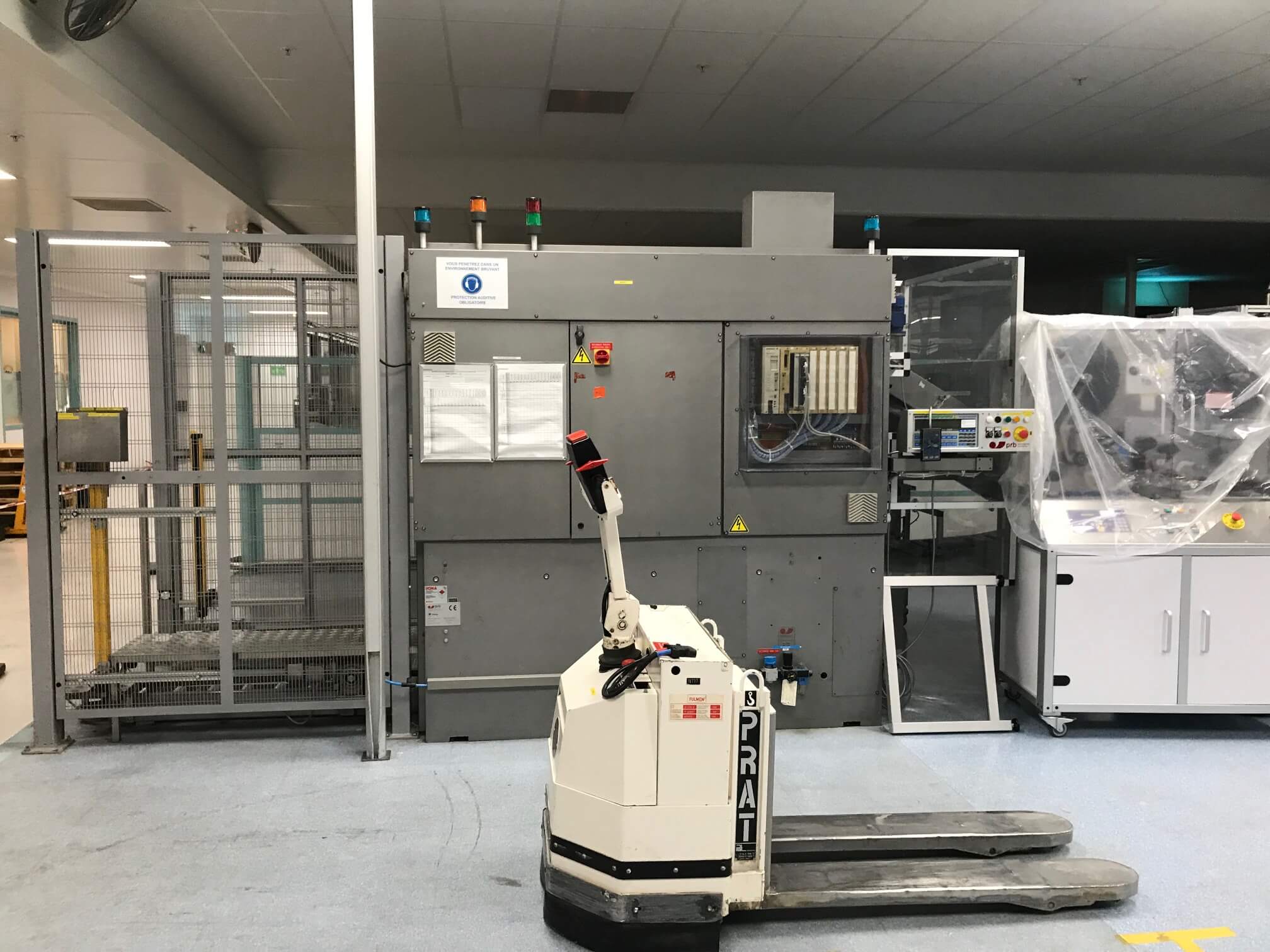The use of palletisers in industry
A palletizer is designed to create stable pallets in order to send them to the final stage of logistics, before distribution. A palletising system will collect packaged products, group them together and finally assemble them on a pallet.
The palletiser can be semi-automatic or integrated into a fully automatic palletising system. A palletising robot can be used for the same functions.
Palletising can be carried out on different types of products: bags, cartons, cans, glass bottles, tins, cans, jars, cans …
How does a palletising machine work?
A palletizer will firstly gather and group the products to palletise in a square or rectangle shape. In a second step, it transfers the products layer by layer to the pallet. The products are moved using grippers.
For each additional layer, the system will re-center products in order to stabilise the pallet. It can possibly add a cardboard plate (e.g. for bottles). The pallets will then be reinforced before being transported by a wrapping / banding machine or a strapping machine.
The palletising machines can easily change formats and thus adapt to the different productions of companies.
In some cases a company has to purchase one or more empty packaging pallets. It can then use an automatic or semi-automatic depalletiser to prepare the packages for production. Unlike palletisers, de-palletising systems strip, layer by layer, the different levels of the pallet. The machine will then unbundle the packages and transfer them by a conveyor system.
Buy and sell a palletiser / depalletiser
Buying a palletising machine remains a high investment for some companies. Prices vary depending on the condition, brand, location and year of manufacture of the machine. Osertech offers a wide range of equipment and machinery available, enabling buyers to find the best palletising unit opportunities.


